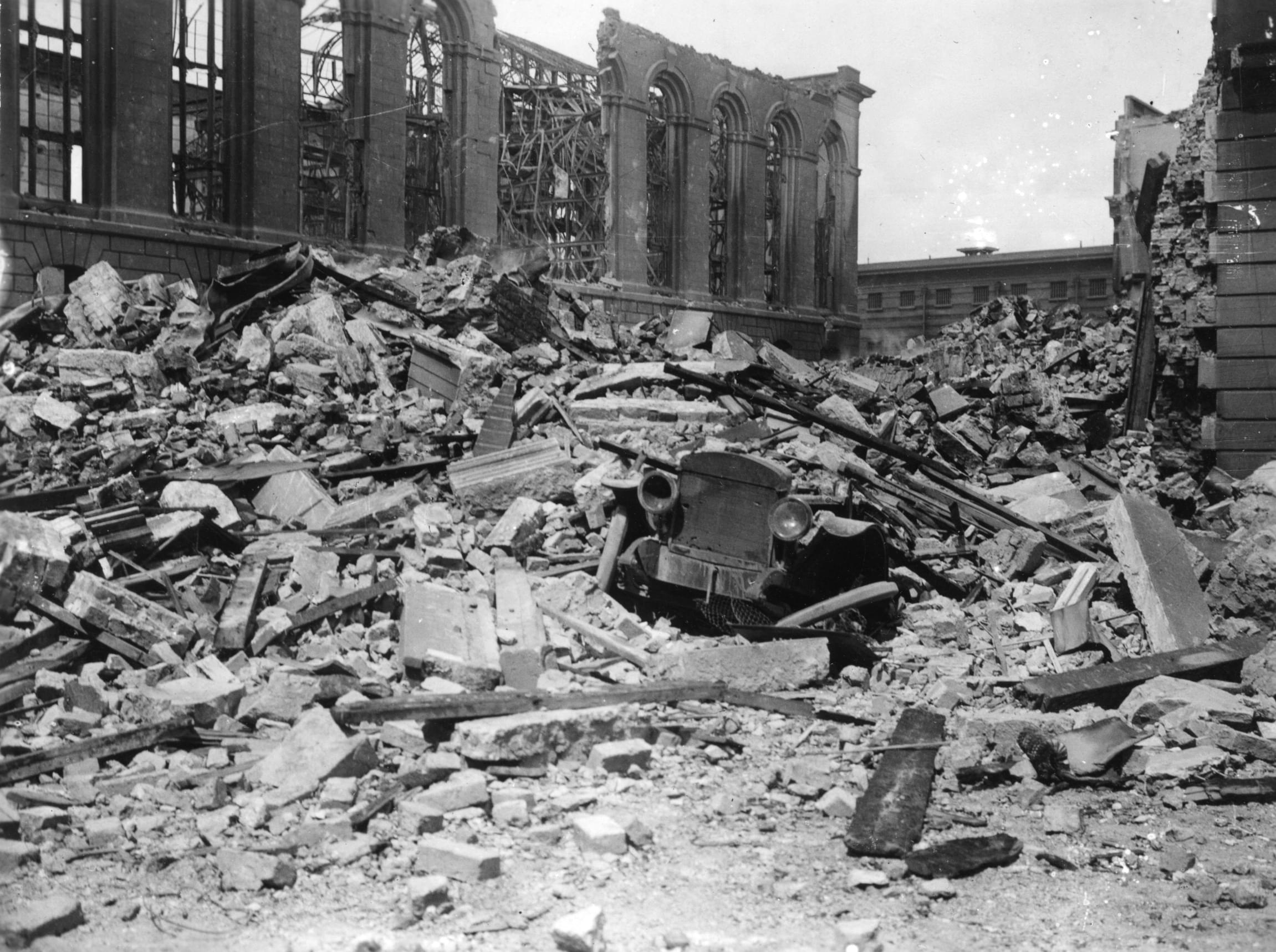This afternoon, Trinity launched a digital recreation of the destroyed Public Record Office of Ireland. The office was destroyed in a fire at the outset of the Irish Civil War in 1922.
Historians and computer scientists at College have revealed the project which will revive the Public Record Office through the creation of a 3D virtual reality reconstruction of the building. Its shelves will be filled with fully-searchable documents and records which have been recovered by identifying surviving or substitute materials held by archives and libraries around the world, as well as facsimile images, antiquarian transcripts and summaries of the records made before the fire.
The project, known as “Beyond 2022: Ireland’s Virtual Record Treasury”, has launched today in the Trinity Long Room Hub Arts and Humanities Research Institute. A project website was also launched today, and will allow the public to explore an animation of the 3D model being developed. For the first time since 1922, the full catalogue of the record treasury will be made available to the public in December on the website.
The fire, which struck the Four Courts on June 30, 1922, destroyed seven centuries of Ireland’s historical and genealogical records. Documentation of births, marriages, deaths, wills, parish registers and town records were among the records lost. The reconstruction will be complete by 2022 in time to mark the centenary of the fire.
Provost Dr Patrick Prendergast noted the importance of the project. “By reconstructing a lost treasure, Trinity is seeking to create a lasting and meaningful legacy and an invaluable resource for researchers and educators at all levels which will continue to grow beyond 2022. By moving beyond the divisive legacy of the period, the project will also reopen Ireland’s deeper past to the general public at home and in the wider diaspora,” he said.
It is hoped that the project will allow a global audience to access historical and genealogical facts which were previously lost. The assistive power in the tracing of Irish ancestry and potential to transform how Ireland’s past is understood is highly anticipated.
“Because the archival collections date from such an early period of history, the reconstruction effort will allow anyone with an interest in researching their families or localities to engage in deep history, reaching back almost half a millennium earlier than most readily available genealogical resources,” commented Dr Peter Crooks, Principal Investigator of the project and Assistant Professor of the School of Histories and Humanities. “By reconstructing these records, which collectively comprise millions of historical and genealogical facts, we have the power to transform the evidence base on which Irish history is written.”
When the project is completed, users will be able to experience an immersive virtual tour of the digitally reconstructed Public Record Office and request a historical document in the Victorian Reading Room. Additionally, access will be available to the destroyed Record Treasury itself, where surviving fragments or substitute copies in digital forms can be explored at the very location were the original record once stood.
The project is funded by the Irish Research Council. It is led by the School of Histories and Humanities and the ADAPT Centre for Digital Content Technology.







